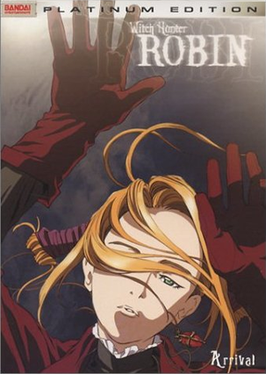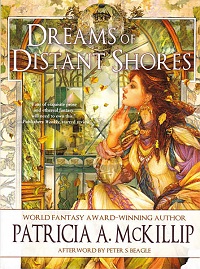
Gothic fiction, sometimes called Gothic horror, is a loose literary aesthetic of fear and haunting. The name refers to Gothic architecture of the European Middle Ages, which was characteristic of the settings of early Gothic novels.

Goth is a music-based subculture that began in the United Kingdom during the early 1980s. It was developed by fans of gothic rock, an offshoot of the post-punk music genre. Post-punk artists who presaged the gothic rock genre and helped develop and shape the subculture include Siouxsie and the Banshees, Bauhaus, the Cure, and Joy Division.
Gothic rock is a style of rock music that emerged from post-punk in the United Kingdom in the late 1970s. The first post-punk bands which shifted toward dark music with gothic overtones include Siouxsie and the Banshees, Joy Division, Bauhaus, and the Cure.

Whitby is a seaside town, port and civil parish in North Yorkshire, England. The town is on the Yorkshire Coast at the mouth of the River Esk. It has a maritime, mineral and tourist economy. The fishing port emerged during the Middle Ages, supporting important herring and whaling fleets, and was where Captain Cook learned seamanship and, coincidentally, where his vessel to explore the southern ocean, The Endeavour was built. Jet and alum were mined locally, and Whitby jet, which was mined by the Romans and Victorians, became fashionable during the 19th century.

Witch Hunter Robin is a 2002 Japanese anime series created by Sunrise and animation director Shūkō Murase. The series originally aired in Japan on TV Tokyo between July and December 2002. The series was licensed for North American distribution by Bandai Entertainment. The series follows a fictional Japanese branch of a secret global organization called "SOLOMON" or the "Solomon Toukatsu Nin'idantai", abbreviated as "STN" or "STN-J". Solomon fights the harmful use of witchcraft using a database of witches, which includes those who have obtained the power of witchcraft through genetics and others who carry the gene in order to arrest or eliminate them should their powers "awaken". The series focuses on one STN-J member, Robin Sena.
Robin Jarvis (born 8 May 1963) is a British Young-Adult fiction (YA) and children's novelist, who writes dark fantasy, suspense and supernatural thrillers. His books for young adults have featured the inhabitants of a coastal town battling a monumental malevolence with the help of its last supernatural guardian (The Witching Legacy), a diminutive race of Werglers (shape shifters) pitched against the evil might of the faerie hordes (The Hagwood Trilogy), a sinister "world-switching" dystopian future, triggered by a sinister and hypnotic book (Dancing Jax), Norse Fates, Glastonbury crow-demons and a time travelling, wise-cracking teddy bear. (The Wyrd Museum series), dark powers, a forgotten race and ancient evils on the North Yorkshire coast (The Whitby Witches trilogy), epic medieval adventure (The Oaken Throne) and science-fiction dramatising the "nefarious intrigue" within an alternate Tudor realm, peopled by personalities of the time, automata servants and animals known as Mechanicals and ruled by Queen Elizabeth I. (Deathscent).

Southern Gothic is an artistic subgenre of fiction, country music, film and television that are heavily influenced by Gothic elements and the American South. Common themes of Southern Gothic include storytelling of deeply flawed, disturbing or eccentric characters who may be involved in hoodoo, decayed or derelict settings, grotesque situations, and other sinister events relating to or stemming from poverty, alienation, crime, or violence.
The Wicked Witch of the West is a fictional character who appears in the classic children's novel The Wonderful Wizard of Oz (1900), created by American author L. Frank Baum. In Baum's subsequent Oz novels, it is the Nome King who is the principal villain; the Wicked Witch of the West is rarely even referred to again after her death in the first book.
A rivethead or rivet head is a person associated with the industrial dance music scene. In stark contrast to the original industrial culture, whose performers and heterogeneous audience were sometimes referred to as "industrialists", the rivethead scene is a coherent youth culture closely linked to a discernible fashion style. The scene emerged in the late 1980s on the basis of electro-industrial, EBM, and industrial rock music. The associated dress style draws on military fashion and punk aesthetics with hints of fetish wear, mainly inspired by the scene's musical protagonists.

Lives of the Mayfair Witches is a trilogy of supernatural horror/fantasy novels by American novelist Anne Rice. It centers on a family of witches whose fortunes have been guided for generations by a spirit named Lasher. The series began in 1990 with The Witching Hour, which was followed by the sequels Lasher (1993) and Taltos (1994). All three novels debuted at No. 2 on The New York Times Best Seller list.

Klarion the Witch Boy is a supervillain appearing in American comic books published by DC Comics, having first appeared in The Demon #7 and was created by Jack Kirby. The character is typically portrayed as a powerful but mischievous, immature extradimensional warlock who serves as both the archenemy of Etrigan the Demon and is a reoccurring adversary for various mystic characters and teams in the DC Universe.
Rosetta Stone are an English gothic rock band formed in the 1980s by Porl King (guitar/vocals/keyboards) and Karl North (bass), plus their drum machine and synthesizer rack nicknamed "Madame Razor".
The Lancashire Book of the Year is an award given to works of children's literature, voted for by a panel of young judges. It was established in 1986 with the first award presented the following year. The award is run by Lancashire County Council's library service and sponsored by the University of Central Lancashire.
Deadtime Stories is a series of children's horror fiction novels created by authors Annette Cascone and Gina Cascone writing under the name AG Cascone.

Screaming Banshee Aircrew were an English rock band originating from York. Their varied music appealed to the Gothic scene, and their energetic performances attracted many fans across the UK. They were disbanded in July 2010, and many of the band members went on to join other bands.

Dreams of Distant Shores is a collection of fantasy stories by Patricia A. McKillip. It was first published in ebook by Tachyon Publications in May 2016, with the trade paperback print edition following from the same publisher in June 2016.
Gothic Western is a subculture, artistically similar to Gothic Americana, but blends goth and Western lifestyles that are notably visible in fashion, music, film and literature.
Folk horror is a subgenre of horror film and horror fiction that uses elements of folklore to invoke fear and foreboding. Typical elements include a rural setting, isolation, and themes of superstition, folk religion, paganism, sacrifice and the dark aspects of nature. Although related to supernatural horror film, folk horror usually focuses on the beliefs and actions of people rather than the supernatural, and often deals with naïve outsiders coming up against these. The British films Blood on Satan's Claw (1971), The Wicker Man (1973) and Witchfinder General (1968) are regarded as pioneers of the genre, while the 2019 film Midsommar sparked renewed interest in folk horror. Southeast Asian cinema also commonly features folk horror.









